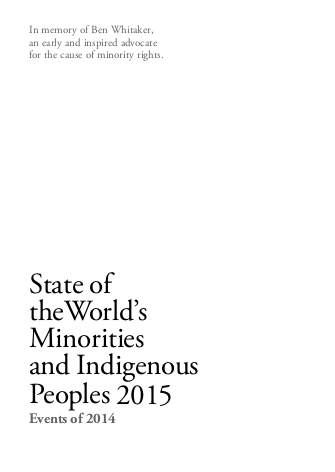
This impressive volume put together by Minority Rights Group International (MRG) highlights the continued failure of many municipal officials, city planners and other urban decision makers to recognize and support their minority and indigenous populations. Furthermore, it draws attention to the limited understanding among rights activists of the specific implications that urbanization has for minority and indigenous communities. In Canada, where the majority of the country’s First Nations population now live in urban areas, entrenched exclusion and discrimination have pushed young community members into criminal gangs. In Bangladesh, Dhaka’s Dalit population are mostly concentrated in isolated and unsanitary ‘colonies’ where basic services such as water access are largely absent. In Uganda, poverty and crop failure have driven many Karamajong to migrate to Kampala, where community members can end up engaged in begging, prostitution or being exploited in other ways. Though each example is unique, the common thread between them is the particular challenges that urban areas present for these groups.
Links
Resource collections
- UN Habitat - Urban Response Collection
- Urban Response - Urban Crisis Preparedness and Risk Reduction
- Urban Response Collection - Community Engagement and Social Cohesion
- Urban Response Collection - Economic Recovery
- Urban Response Collection - Environment and Climate Change
- Urban Response Collection - Housing, Land and Property
- Urban Response Collection - Urban Crisis Response, Recovery and Reconstruction
- Urban Response Collection - Urban Resilience
